Panasonic 2011 TV Briefing
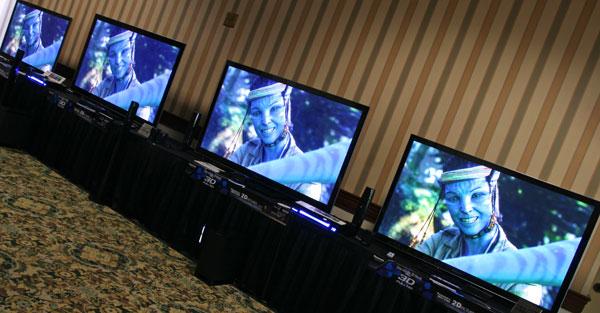
On the plasma front, several feature designations have been changed to reflect substantial improvements. For example, NeoPDP has become NeoPlasma to indicate faster-switching phosphors, increased luminous efficiency (15 percent more than last year), and improved louver filter for deeper blacks and better performance in ambient light. Also, VieraCast is now VieraConnect with greater interactivity (including Skype, Twitter, and Facebook), more content sources (including Hulu Plus), and expanded app services (including sports, gaming, fitness, and shopping).
Panasonic's LCD TVs use IPS (in-plane switching) panels rather than VA (vertical alignment), which offer a wider viewing angle at the expense of black level. The company claims its new IPS Alpha panels offer twice the switching speed of its previous models (2 milliseconds versus 4ms) thanks to Advanced Pre-discharge Drive (APD) and a thinner LCD layer that is less viscous than most, resulting in better motion response.
In terms of 3D, the VT30 and GT30 lines are THX 3D-certified, and all of Panasonic's 3D products now have 2D-to-3D conversion. But one of the biggest tidbits was that the VT30, GT30, and ST30 lines now provide frame interpolation to smooth out 3D motionthat's right, a feature many consider the scourge of high-refresh-rate LCDs for its reviled "soap-opera effect" is now implemented in Panasonic plasmas! In the demonstration of this feature, it dramatically smoothed out 3D motion, and I didn't see an obvious soap-opera effect, but then again, I'm not bothered by frame interpolation in LCD TVs like most videophiles.
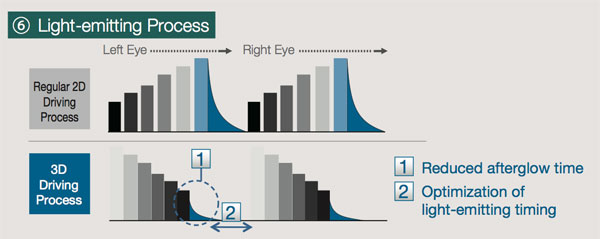
Another revelation was that this year's 3D plasmas reverse the display order of subfields. Normally, the subfields for each eye are displayed with increasing brightness as shown in the top of the diagram above. But in a stroke of "why didn't we think of this before?" genius, Panasonic has now reversed the order, starting with the brightest subfield and getting progressively darker, which means that much less light can leak from one eye's image into the other eye, greatly reducing crosstalk.
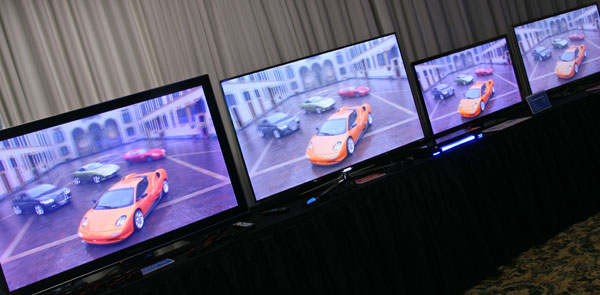
Speaking of crosstalk, these four 3D displaysleft to right, a TC-P50VT30 plasma, Samsung UN55D8000 LCD, TX-L37DT30 LCD, and Samsung UN40D6400 LCDrevealed slightly more crosstalk on the Samsungs than the corresponding Panasonics, but it was not a big difference to my eyes. Somehow, the Panasonic active glasses worked with the Samsungs, which couldn't be fully explained.
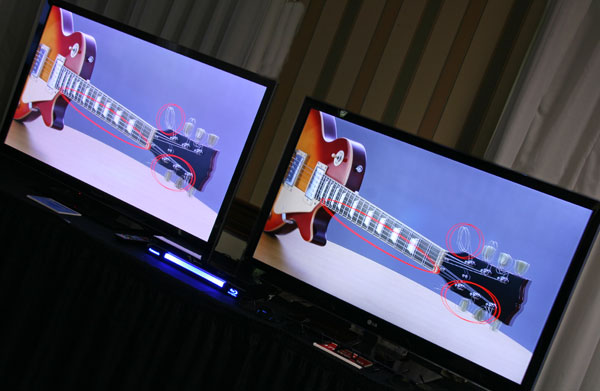
The comparison of active- and passive-glasses 3D went about as expected. On the LG 47LW6500 LCD (right) with passive glasses, guitar strings had clear stairsteps, while they were smooth on the Panasonic TC-P50GT30 plasma with active glasses. And there was lots of crosstalk on the LG when viewed from above or below the central axis, demonstrating another drawback of FPR (film pattern retarder) 3D as used by LG and other passive-3D LCD makers.
Granted, most of the images in this test were stills, which suffer from more loss of apparent resolution than moving images on an FPR 3D set, but the few moving images also had more artifacts than the Panasonic. Interestingly, I didn't notice thin black horizontal lines on the LG, probably because the screen was too small for the seating distance.
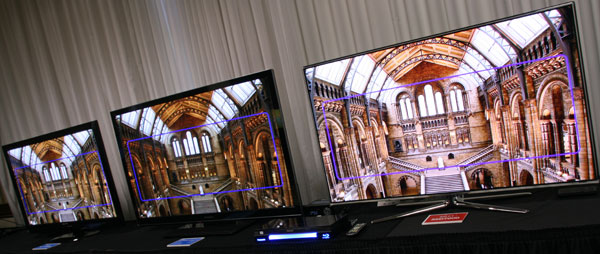
Left to right in the photo above, this demo of 2D motion detail included last year's TC-P50G20, this year's TC-P50GT30, and a Samsung UN55D7000 LCD TV, all showing the same content with still images horizontally scrolled fairly quickly. To make sure the demo was comparing best-case scenarios, the GT30's Motion Smoother frame interpolation was turned on, as was the D7000's Auto Motion Plus frame interpolation and LED Motion Plus LED scanning.
Given that, I was surprised to see that fine details tended to smear and break up on the LCD, while they looked sharp and crisp on the two plasmas, perhaps a bit more so on the GT30 thanks to the new model's frame interpolation. In fact, the Panasonic rep conducting the demo claimed that the new plasmas maintain full 1080p resolution with motion as fast as 1200 pixels per second.
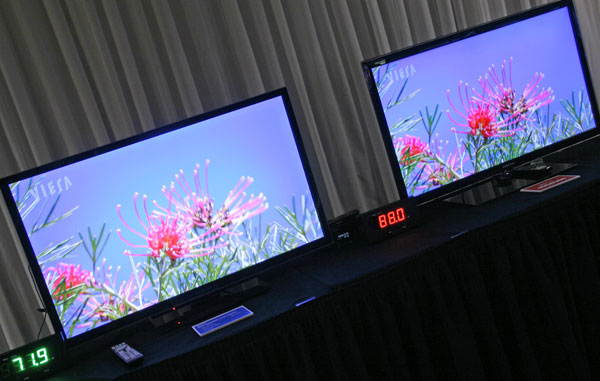
In this demo, it was clear that the Panasonic TX-L37DT30 LCD (left) consumed less power than the Samsung UN40D6300. The Panasonic also exhibited better motion detail and a wider viewing angle with less color and contrast shift, but on axis, I preferred the deeper, richer look of the Samsung, which uses VA LCD technology.
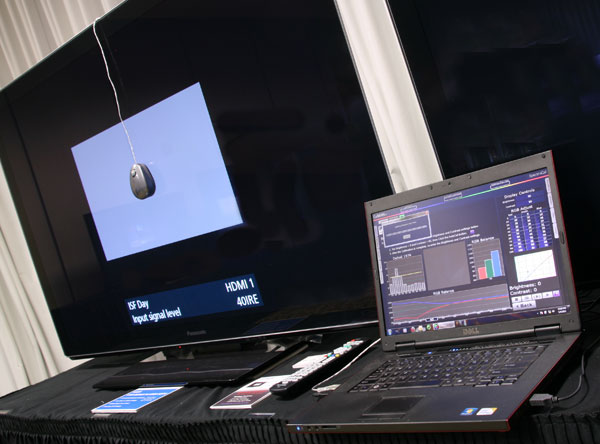
I was particularly excited to learn that the grayscale of the VT30 and GT30 plasmas and DT30 LCDs can now be automatically calibrated using SpectraCal CalMan software and any compatible measurement probe. In the VT30 and GT30 plasmas, the system does a 10-point grayscale calibration, while the DT30 LCD provides a 2-point grayscale calibration. This feature is mostly intended for installers and dealers to dial in the grayscale for a customer's specific environment, but enthusiasts can also use it themselves, and SpectraCal estimates it should take even a novice about 10 minutes to get the grayscale closer to correct than even the THX mode.
Al in all, it was a very interesting day with Panasonic. I look forward to working with some of these sets up close and personal.



















































